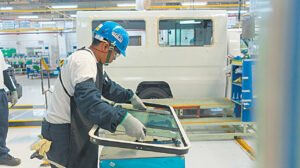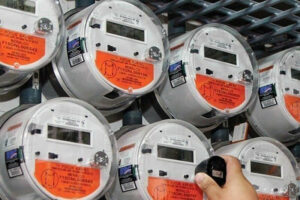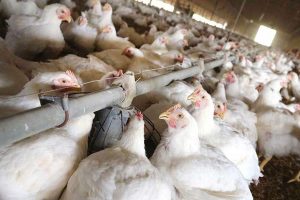Let’s talk tariff (conclusion)

THE “TARIFF DIPLOMACY” of the United States with the rest of the world is causing upheavals in the global economy. Already, the International Monetary Fund (IMF) has cut its estimates for economic growth by half a percentage point from 3.3% to 2.8%. That is a very significant setback.
It was, therefore, very welcome news when the United States and China announced last week a 90-day reprieve on reciprocal tariffs. The US is winding down a 145% tariff on Chinese goods to 30% while China is also cutting its retaliatory tariff from 125% to 10%. Capital markets breathed a major sigh of relief, at once bouncing back to levels prior to the “Liberation Day” announcement of increased tariffs by President Donald Trump.
While the US and China have agreed to a mechanism to work out trade differences, however, the increased tariffs on autos and auto parts remain in place.
It will be noted that the US government has provided some relief for automakers. It is allowing for exemptions and rebates for certain manufacturers, particularly those investing in production in the country or complying with the United States-Mexico-Canada Agreement (USMCA). The USMCA defines stringent rules-of-origin requirements for autos and auto components. These include Regional Value content (75% of the vehicle value must originate from North America), Labor Value content (40% of the vehicle value must be produced by workers earning at least US$16/hour), Steel and Aluminum Sourcing (70% must be sourced from North America) and Core Parts Origination (engines, transmissions, and batteries must be produced within the USMCA region).
All the back-and-forth on tariffs and the flurry of high-level exchanges between governments and automakers underscore the importance of the auto industry to economies around the world. This is true not only for those producing complete vehicles but also for those producing auto components. While China accounts for only 2% of completely-built-up vehicle imports to the US, it accounted for 11.6% of auto parts imports in 2023 worth approximately US$9.9 billion. South Korea reportedly exported US$8.08 billion while Japan exports of auto components reached US$7.49 billion. Mexico was, by far, the largest exporter of auto parts to America, accounting for up to 40.4% or US$78.4 billion.
Several member-states of the Association of Southeast Asian Nations (ASEAN) also export auto parts to the United States. The biggest is Thailand which, according to a report by the Bangkok Post — citing figures from the Thai Auto Parts Manufacturers Association — exported an estimated US$4 billion to the USA in 2023. A report by World’s Top Exports cites Vietnam as the second-largest ASEAN exporter of auto parts to America with exports in 2023 reaching US$553 million. The Philippines, on the other hand, was reported by the World Integrated Trade Solution as having exported US$66 million worth of auto parts to America in 2023.
The new baseline tariff of 10% and the 25% tariff on autos and auto parts will surely give auto manufacturers pause. I believe that their first reaction would be to consolidate parts sourcing from the rest of the world to North America, taking advantage of USMCA provisions for tariff-free imports. In fact, US automakers are already going through the exercise of evaluating the economics of complying with the USMCA versus alternate ways of reconfiguring their global supply chains.
In this respect, the proposed reciprocal tariffs will hold a significant sway. This is yet another layer of the tariff diplomacy of the US — and is potentially much more devastating. If they are implemented in their current form — including the 145% tariff on Chinese goods that is now on hold for 90 days — consolidating parts sourcing in the North America region may make a lot of sense. However, it is difficult to make a definitive assessment at this time since these reciprocal tariffs are suspended until July 9, 2025 — except for China whose exemption will extend for a week or so more — and are the subject of spirited negotiations between the US and the affected countries. Since the planned reciprocal taxes vary widely from one country to another, these will have material bearing on supply-chain strategies.
A reciprocal tariff of 34% was supposed to have been imposed on China-sourced goods but this eventually rose to 145% after China reacted with tariff increases of its own on US exports to China. For now, they have been reduced to 30%. Reciprocal tariffs are also to be imposed on India (26%), South Korea (25%), Japan (24%) and the EU (20%). ASEAN countries are also included — Vietnam (46%), Thailand (36%), Indonesia (32%), Malaysia (24%), the Philippines (17%) and Singapore (10%). All these will have material bearing on whether car makers onshore or reshore auto parts manufacturing to the US.
The reciprocal tariffs are currently being negotiated with bigger countries like China, EU, Japan, and Canada holding a tougher line of resistance. Most other countries, on the other hand, are trying to negotiate for a more forgiving rate. The lower the tariff, the less trade disruption there will be. Additionally — and, perhaps, more importantly — it opens the door to a relocation of production bases to countries that are the subject of lower reciprocal tariffs.
It makes sense for the ASEAN to negotiate with the USA using its collective power. After all, a young and large population of over 600 million people with economies that are growing at a faster clip than most of the world is a strong leverage. However, this could turn out to be a very complicated — and protracted — initiative given the wide disparities in the trade flows of each of the member-countries with the US. Bilateral negotiations would probably yield the quickest results.
As it stands, the Philippines can consider itself to be in an advantageous position versus most other auto parts producing nations. This is not to mean that the Philippines will necessarily be opportunistic about the matter. After all, we have been among the most adherent to the WTO rules system in terms of free trade. However, the way the planned US reciprocal tariffs are currently structured, sheer economics will not be deterred.
Without meaning to oversimplify the matter, if auto parts from China are subjected to a 145% reciprocal tariff — which is not likely following recent pronouncements — then US car makers will likely choose to source from other countries with a lower rate. This could be any country, though, since 145% is practically a trade embargo on China. The Philippines makes for an attractive production base given that the reciprocal tariff on us is only 17%, the lowest in ASEAN next to Singapore. We can export parts to the US with a 29% tariff advantage over Vietnam, 19% over Thailand, 15% over Indonesia and 7% over Malaysia. We assume, however, that the cost of production in the Philippines is comparable to others — which is likely not the case. Or we can say that production in the Philippines can accommodate a cost penalty up to the extent of the tariff differentials. The ultimate goal, of course, is that Philippine auto parts makers must strive to attain a competitive cost structure compared to other countries; competing based on a tariff advantage is not really a sustainable growth strategy. But what the tariff advantage does is get our foot in the door.
In terms of immediacy, though, auto parts makers with built-up capacity in whichever country that has a lower reciprocal tariff than China will have the leg up on others. The investment for a new factory in the Philippines is an added cost that will need to be absorbed within the tariff differential as well — not to mention the needed lead time in the construction and startup of a new plant. Surely, however, the Philippines can compete in terms of skilled labor, quality of production, a business-friendly government, and a stable monetary policy. This opportunity might just be what local auto parts manufacturers need to break into the global supply chain.
If we can capture even a part of, say, the US$9.9-billion auto parts exports by China to the US mentioned earlier, this will be a big plus to the strengthening of the manufacturing sector in the Philippines. It will be recalled that manufacturing only contributes about 16% to 17% to our country’s GDP compared to over 60% by the service sector. The beauty of a stronger manufacturing sector is that it provides for higher levels of (local or foreign) investments, more lasting employment and — in the case of the auto industry — contributes significantly to government revenues, not to mention the increase in exports. This could be a significant step forward in the achievement of our long-term national development plans.
Secretary Frederick Go, Presidential Assistant for Investment and Economic Affairs to President Ferdinand Marcos, Jr., returned from a recent trip to the US to negotiate the impending reciprocal tariffs on the Philippines. He reported that the discussions went very well and that he is confident about finding a mutually beneficial path forward. This augurs well and might lead to a broadening of trade between the Philippines and the USA.
At the heart of trade flows is the principle of competitive advantage. Some countries are more competitive in producing car parts than they are in producing agricultural products. Therefore, we trade. However, car parts are more expensive than corn or potatoes, so a trade imbalance ensues. The imposition of tariffs is one way of managing this trade deficit and equalizing any other considerations that may distort the level playing field such as government subsidies or non-tariff barriers (e.g. technical or regulatory barriers). Ultimately, however, we need to strengthen our true competitiveness in terms of costs of production — particularly in terms of power cost, logistics, and raw material costs.
As I said, tariffs are complicated and there are too many moving parts to make a definite determination of what the outcome will finally be in this round of US tariff diplomacy. Scenario planners must be busy playing out the multitude of variables and what-if possibilities. One thing is sure, until negotiations are finalized and the dust settles, the prevailing confusion has thrown a gargantuan monkey wrench into the global economy. In the end, this is the real story of tariffs: how it will affect trade flows and the global economy. We hope the fallout will be manageable.




